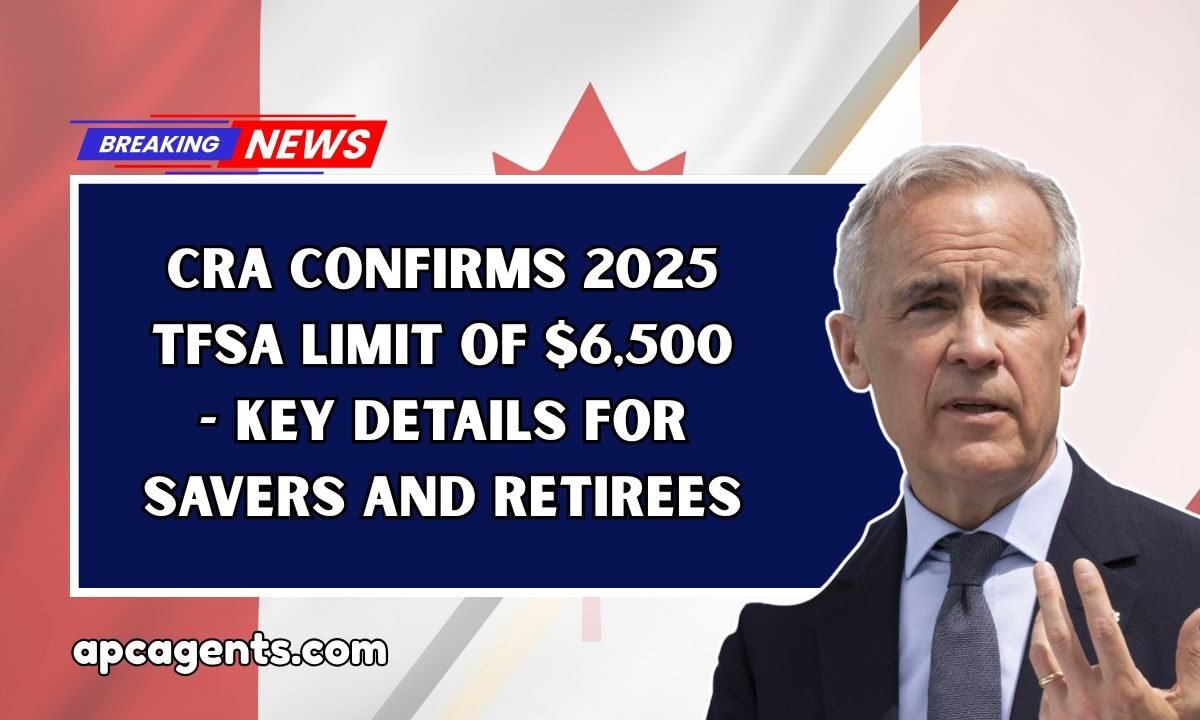In 2025, the Canada Revenue Agency (CRA) has made it easier for Canadians to save money and grow their future wealth. With the latest updates, people can now take advantage of Tax-Free Savings Accounts (TFSA) and Registered Retirement Savings Plans (RRSP) to secure their financial future.
These options allow Canadians to earn returns without paying taxes or reduce the taxes they owe. Whether you’re saving for retirement, buying your first home, or planning for your child’s education, these updated programs can help you reach your goals faster.
Tax-Free Savings Account (TFSA)
A TFSA is one of the most flexible saving tools available in Canada. You can use it to save for emergencies, travel, or retirement. Any interest, dividends, or capital gains you earn inside a TFSA are completely tax-free, and you can withdraw your money whenever you want without penalty.
If you haven’t contributed in previous years, your unused contribution room will carry forward, meaning you can deposit more in 2025. However, if you contribute more than the limit, the CRA will charge a 1% penalty per month on the extra amount until it’s fixed.
Registered Retirement Savings Plan (RRSP)
The RRSP is mainly for retirement planning. When you contribute to an RRSP, you can deduct the amount from your taxable income, which means you pay less tax right now.
The money inside your RRSP grows tax-deferred—you only pay tax when you take it out, usually after retirement when your income (and tax rate) is lower.
For 2025, you can contribute up to 18% of your earned income, up to a maximum of $31,560. RRSPs are ideal for people with higher incomes who want to reduce their tax bill while saving for the future. But remember, RRSP withdrawals are taxable in the year you take them out.
Comparison of CRA Savings Plans
| Plan Type | 2025 Limit | Tax Benefit | Best For | Withdrawal Rules |
|---|---|---|---|---|
| TFSA | $6,500 | Tax-Free Growth | All Income Levels | Withdraw Anytime, Tax-Free |
| RRSP | $31,560 | Tax Deduction | High Earners | Taxed When Withdrawn |
| FHSA | $8,000 | Tax-Free for Home Purchase | First-Time Home Buyers | Must Be Used for a Home |
| RESP | No Fixed Limit | Grants + Tax-Deferred | Parents Saving for Education | Taxed in Child’s Name |
| RDSP | Varies | Grants + Bonds | Disabled Individuals | Tax-Deferred Withdrawals |
How to Maximize Your Savings
To get the most out of these plans in 2025, you need to plan smartly. If you have a lower income or need flexibility, focus on the TFSA since you can access the money anytime without tax. If you earn a higher income, prioritize the RRSP for the tax deduction it offers.
You can also combine both: use the TFSA for short-term goals and the RRSP for long-term retirement planning. Set up automatic contributions each month to stay consistent, and review your contribution limits every year to avoid penalties.
CRA’s Other Saving Options
Apart from TFSA and RRSP, the CRA offers other useful plans:
- FHSA (First Home Savings Account): Helps first-time buyers save for a home with tax-free benefits.
- RESP (Registered Education Savings Plan): Helps parents save for their children’s education and earn government grants.
- RDSP (Registered Disability Savings Plan): Supports people with disabilities through matching grants and tax-deferred growth.
Canada’s 2025 savings and pension options give everyone—from young workers to retirees—a fair chance to grow their money smartly. Whether you choose a TFSA for flexibility or an RRSP for long-term benefits, both plans can strengthen your financial security.
Understanding how each plan works and using them together can help you save more, pay less tax, and achieve your financial goals faster. In short, smart saving today means a worry-free tomorrow.
FAQs
What is the TFSA limit for 2025?
The TFSA limit for 2025 is $6,500, as confirmed by the Canada Revenue Agency.
Can I contribute to both TFSA and RRSP in the same year?
Yes, you can contribute to both accounts as long as you stay within each contribution limit.
Are RRSP withdrawals taxed?
Yes, RRSP withdrawals are taxed as income in the year you withdraw the money.




